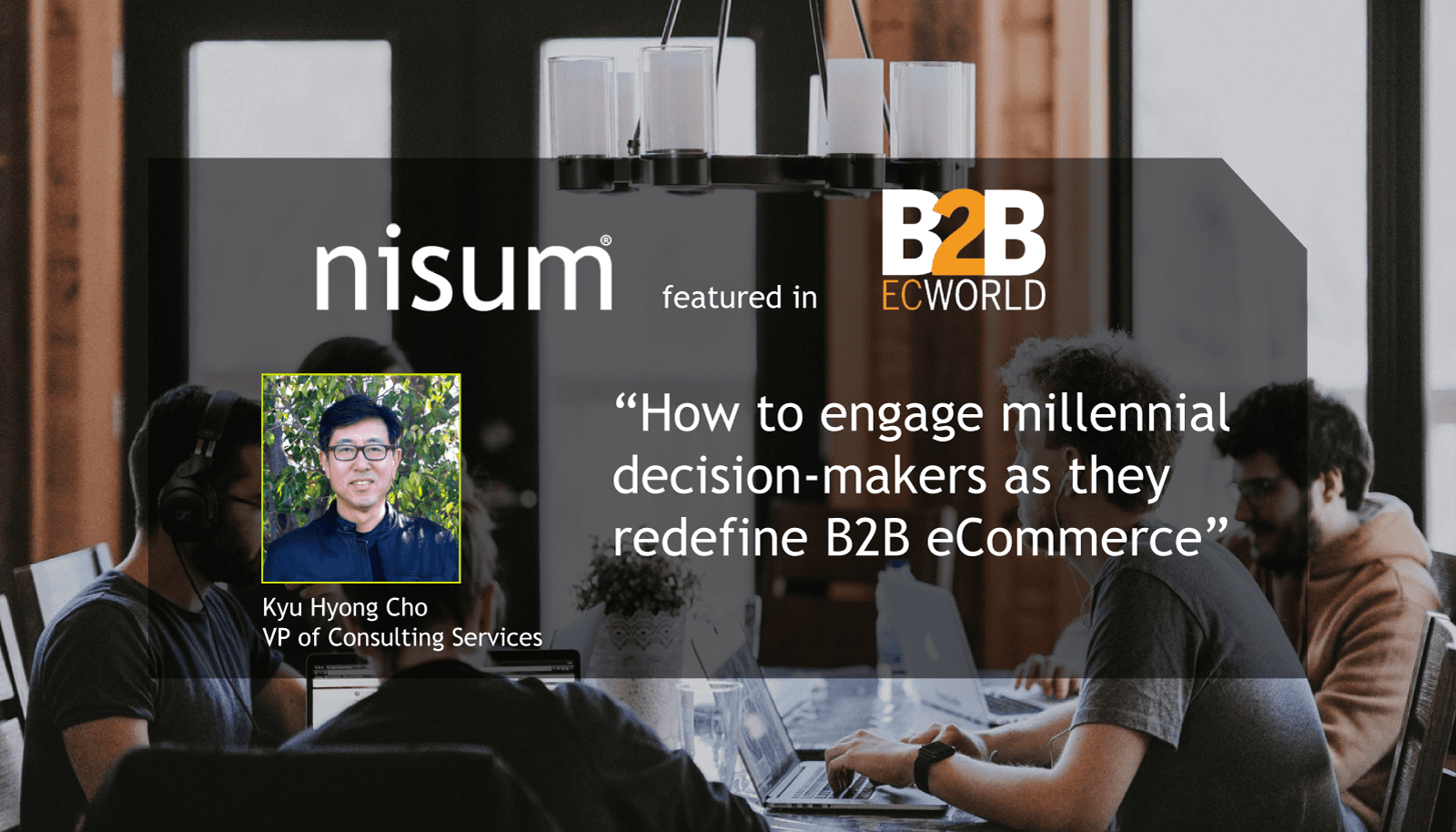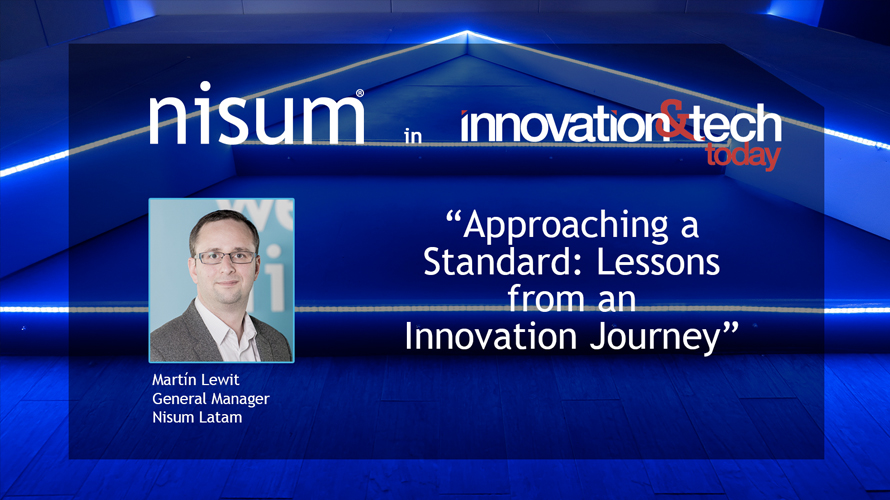Nisum's VP of Consulting Services, Kyu Cho, talks about the changing B2B eCommerce landscape due to the influx of millennials moving into managerial positions in B2B purchasing. Read the full text below or view the article here.

How to engage millennial decision-makers as they redefine B2B eCommerce
B2B eCommerce is expected to become a $1.8 trillion market and account for 17% of all B2B sales in the U.S. by 2023. Driving this growth is the increasing number of millennials stepping into decision-maker roles within their organizations. As these digital natives stand at the helm of many B2B purchasing decisions, it’s crucial to understand the ways in which millennials are redefining the traditional notion of B2B sales.
In looking at the numbers, millennials (ages 23 – 38) are currently the largest generation in the workforce, according to PEW Research Center. Furthermore, according to a 2014 report from Google, millennials comprised nearly half of all B2B buyers (and we can assume that this number has only increased over the past five years).
As such, largely gone are the days of high-touch, relationship-based sales.
(A small caveat here: while the industry is embracing digital transformation to varying degrees, relationship building and face-to-face business is still best practice when products and services require complex customization or authorization from multiple stakeholders. In this environment, sales representatives need to provide personal attention and be available to answer questions.)
They want speed, accessibility, and instant-gratification
A recent study from Forrester Research found that 60% of B2B buyers would rather not communicate with sales reps as their primary source of information. Instead, the overwhelming majority (68%) of B2B buyers prefer to research solutions independently online before ever engaging with a company.
This is not necessarily surprising; B2B millennial buyers are also the same consumers who have grown up using technology at their fingertips to find information and interact with other people. They are comfortable and confident in the self-reliance that technology provides when it comes to making purchasing decisions, and they value the speed, accessibility, and instant gratification that mobile devices and social media provide.
Translated into their B2B buying patterns, leveraging these same devices and technologies at work allows the comparison of product features, availability, price, etc., and the ability to actually place orders, without having to go to a physical store location or talk to a sales rep over the phone.
If a vendor’s eCommerce platform is not simple, seamless, and intuitive, many buyers will simply walk away in favor of a quicker, easier solution—even if the competition’s product or service offering is subpar. To avoid this, vendors should look to modernize their eCommerce capabilities and consider some of the following features and tactics to most effectively reach and convert today’s B2B buyer:
Transparent product catalog:
Enable customers with access to the full product catalog using a content management system. A vendor’s website should also be fully integrated into the CMS and eCommerce platform so that customers can browse and shop at their leisure. Provide all of the pieces needed for the prospect to make a purchasing decision in one place, in an easily digestible format.
Data-driven approach:
Study buyer behavioral data, such as shopping cart abandonment, time spent on a page, etc. to learn where you’re losing potential eCommerce sales.
For example, perhaps the checkout process is too arduous, the total cost is not transparent, routine transactions require the additional step of interacting with a sales rep, the shipping cost is deemed too expensive, or the buyer doesn’t even make it to checkout because there’s not enough product information available to make a decision.
Understanding these “speed bumps” can illuminate more complex issues that need to be solved on back-end website operating software, and also may reveal that something as simple as serving the right promotion to the right shopper at the right time in the buying journey will result in more sales.
Consumer-grade experience:
B2B buyers are expecting an online shopping experience that’s intuitive, easily navigable, pleasant, and responsive. This consumer-grade user interface is table stakes for today’s mobile shoppers, especially as mobile commerce transactions are predicted to overtake eCommerce transactions globally this year.
Invest in developing a sophisticated front-end for B2B buyers by benchmarking against some of the best features in B2C eCommerce apps and mobile shopping experiences: wish list building, loyalty programs, personalization, and product recommendation engines, single-page checkout, subscription buying options, and, buy-online-pick-up-in-store, are just some of the features that can be adapted to B2B.
Marketplace capabilities: An evolved eCommerce platform also provides new avenues for growth, for example, reselling products and services that are complementary to their core offering in the way that many wholesale distribution companies do.
With the rapid growth of the B2B marketplace predicted over the coming years, marketplace commerce could be the easiest way to diversify an organization’s product and service portfolio. And the best part is, one company won't necessarily have to own and manage all of the inventory.
Many B2B companies are already in the midst of digital transformation, something which will only accelerate as more millennials mature into senior-level positions within their organizations. In trying to reach this new generation of decision-makers, legacy vendors are well-served to invest in their eCommerce offerings now, in order to avoid becoming obsolete tomorrow.



